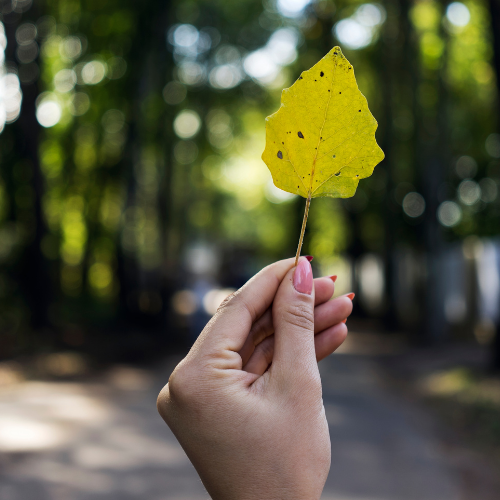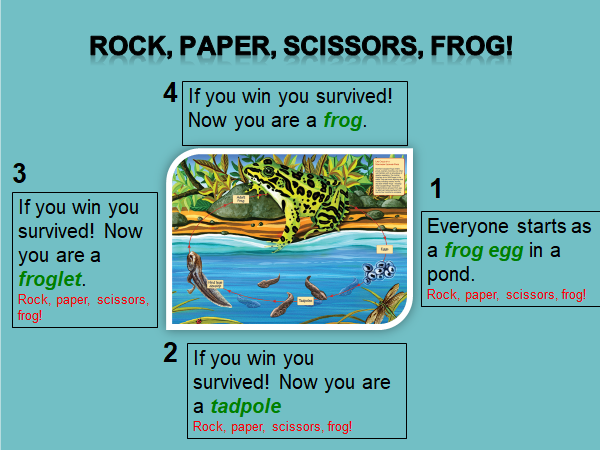Let's see how well you can survive as a Northern Leopard frog
PURPOSE
Observe and describe the growth and development of the Northern Leopard Frog, a species at risk in Canada. Learn about why not all frogs make it through the lifecycle due to either natural or human impacts.
GRADE LEVELS
3-5
SUBJECTS
Science

SKILLS DEVELOPED
Critical Thinking
Problem Solving
Creativity and Innovation
MATERIALS NEEDED
None
TIME
20 minutes
Instructions
- There are four lifecycle stages to the Northern Leopard Frog.
- Everyone begins as an egg… and as the frog eggs walk around the room and bump into another frog egg they must play rock, paper, scissors, frog (regular rock, paper, scissors game)
- If they lose, they stay at the egg stage but if they win… they may advance to the next stage, a tadpole!
- Everyone’s goal is to make it to the final adult stage, the frog! If they make it to the frog stage, restart the cycle and see how many times you can become a frog.
What do the different stages look like?
- Egg: Have kids make a circle with their arms when they are at this stage
- Tadpole: Have kids make a tail with their arms when they are at this stage
- Tadpoles DO NOT have legs yet so kids should only be shuffling around
- Froglet: They now have the use of their legs but froglets still have a tail at this stage
- Frog: Full blown hopping frog with the ability to hop around the room with arms and legs
After a few minutes, freeze the game and discuss:
- How many of you are still eggs?
- How many are tadpoles?
- How many made it to froglets?
- And how many survived to be adult frogs?
Discussion
Why is it that not all frogs become adults?
-
- Predators like big birds, big fish, racoons, and snakes love eating northern leopard frogs at all stages of their life
- Competition – not enough food, water, shelter, or space for everyone to survive!
- Disease – frogs get sick too, just like us!
- Human impacts
- Climate change… wetlands are drying up and they are losing their homes!
- Removing wetlands for agriculture, construction, etc.
- Predators like big birds, big fish, racoons, and snakes love eating northern leopard frogs at all stages of their life
More Bring Nature Home for Families
Bring Nature Home is our online database of tried-and-tested CPAWS Southern Alberta activities! Here are some ways that you can bring nature home (or to the classroom) today!

Who am I?
Bring nature home with this fun environmental education activity! In Who Am I kids get a crash course in both…

Wild Within
Find wellness and mindfulness with time in nature, or “vitamin N,” and learn simple meditation and grounding techniques with different…

Elder Rocks
Find wellness and mindfulness by connecting with the simplest items within nature… rocks!…

